
9 minute read
Making the dream real
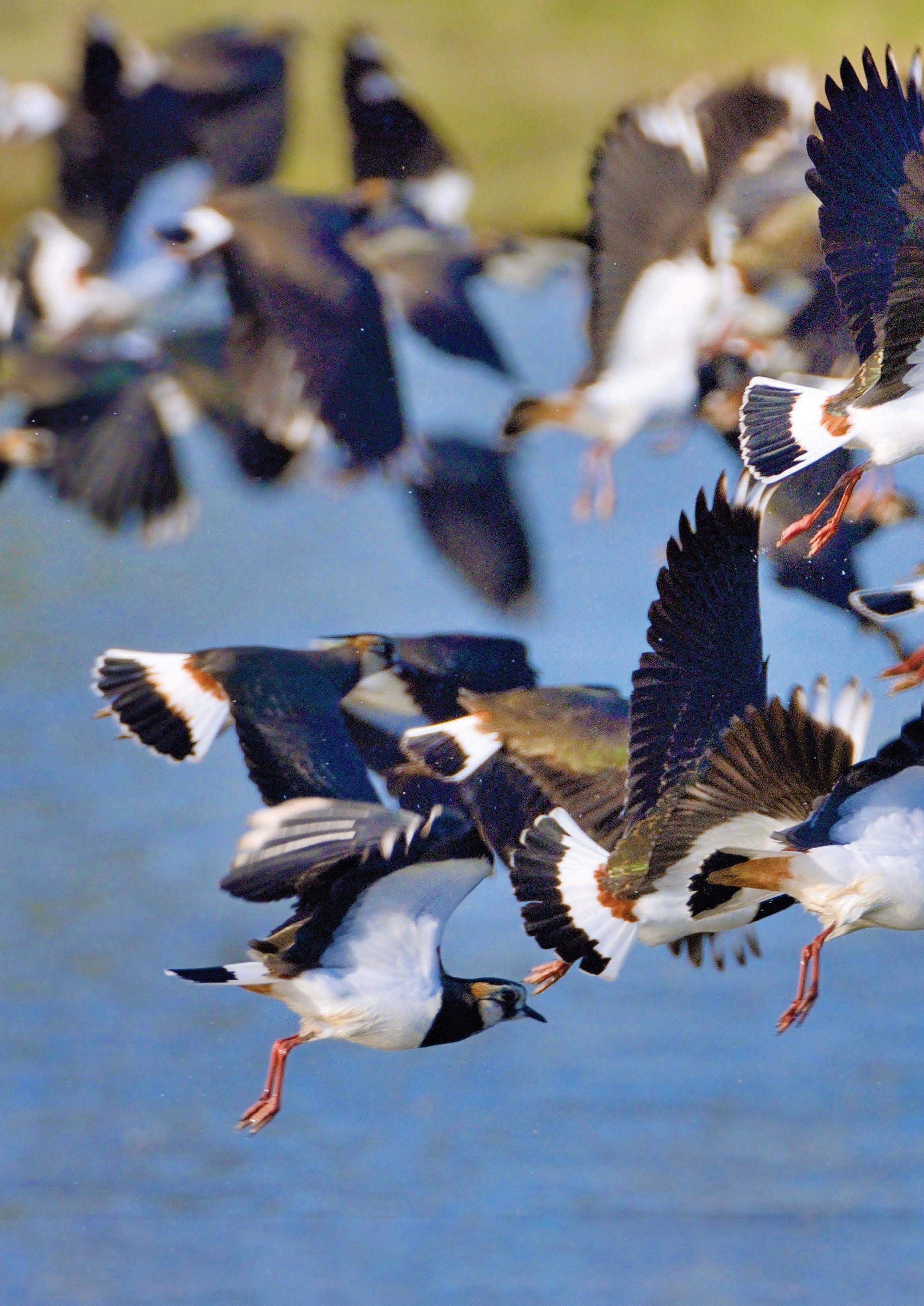
Advertisement


In less than four years, following financial support from the National Lottery Heritage Fund and our members and supporters, wildness has been returned to this precious corner of East Anglia. BY SIMON BARNES

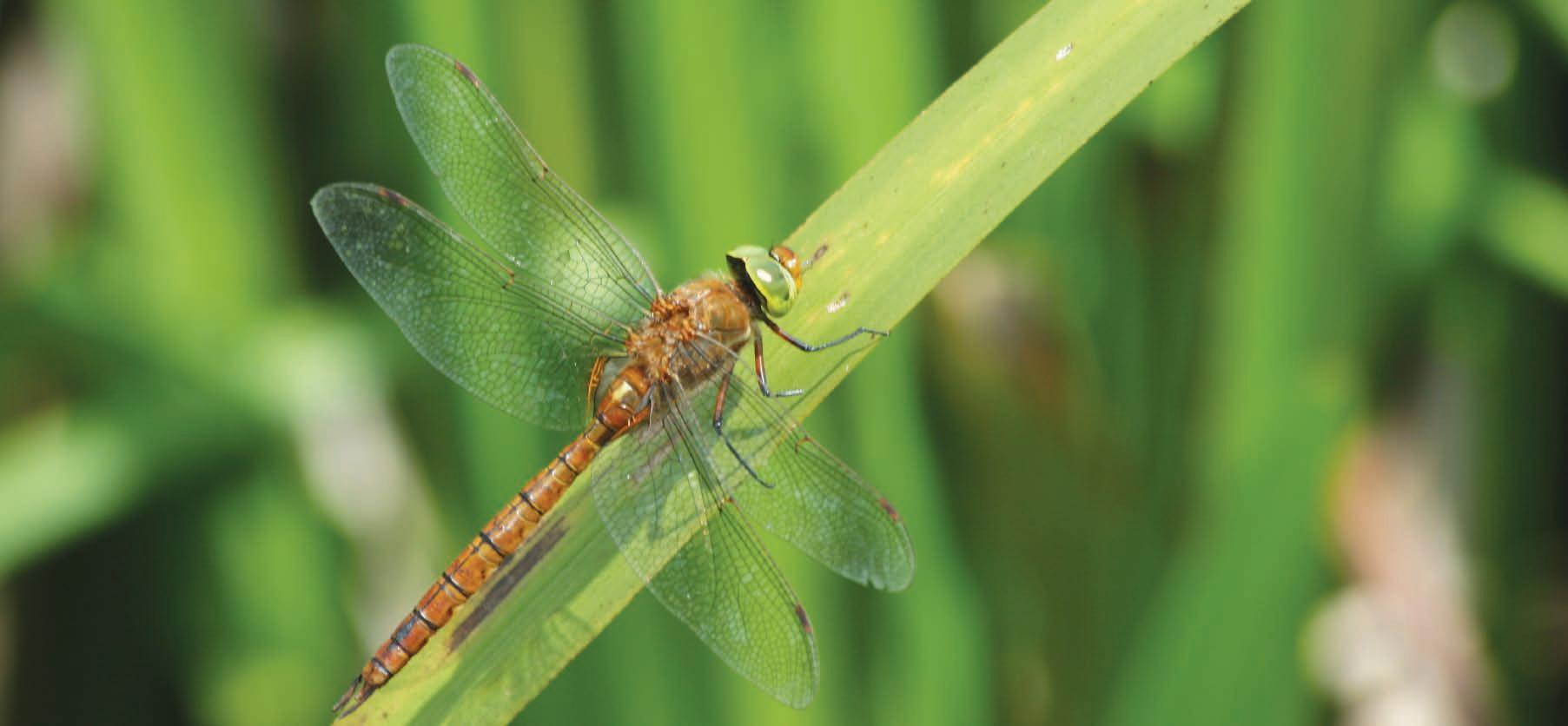
Norfolk hawker
They say you can always spot someone from East Anglia because we walk without effort at an angle of 45 degrees to the ground. It’s about the winds that howl from one side of the place to the other without any interruption from what people from more lumpy places call hills.
And it was a classic 45-degree day when I went back to Carlton Marshes. We were right in the middle of the belligerent windswept weather that greeted us in the opening months of the year. All the world was wind and all the country had been ironed flat. We were small parts of an eternal wet windscape: so big you thought it would never end and that you would never want it to.
Then, as if the wind had summoned them into life, the sky was filled with lapwings: 2,000 lapwings: floppy wings strobing black-white, black-white as they rose without any effort whatsoever. But
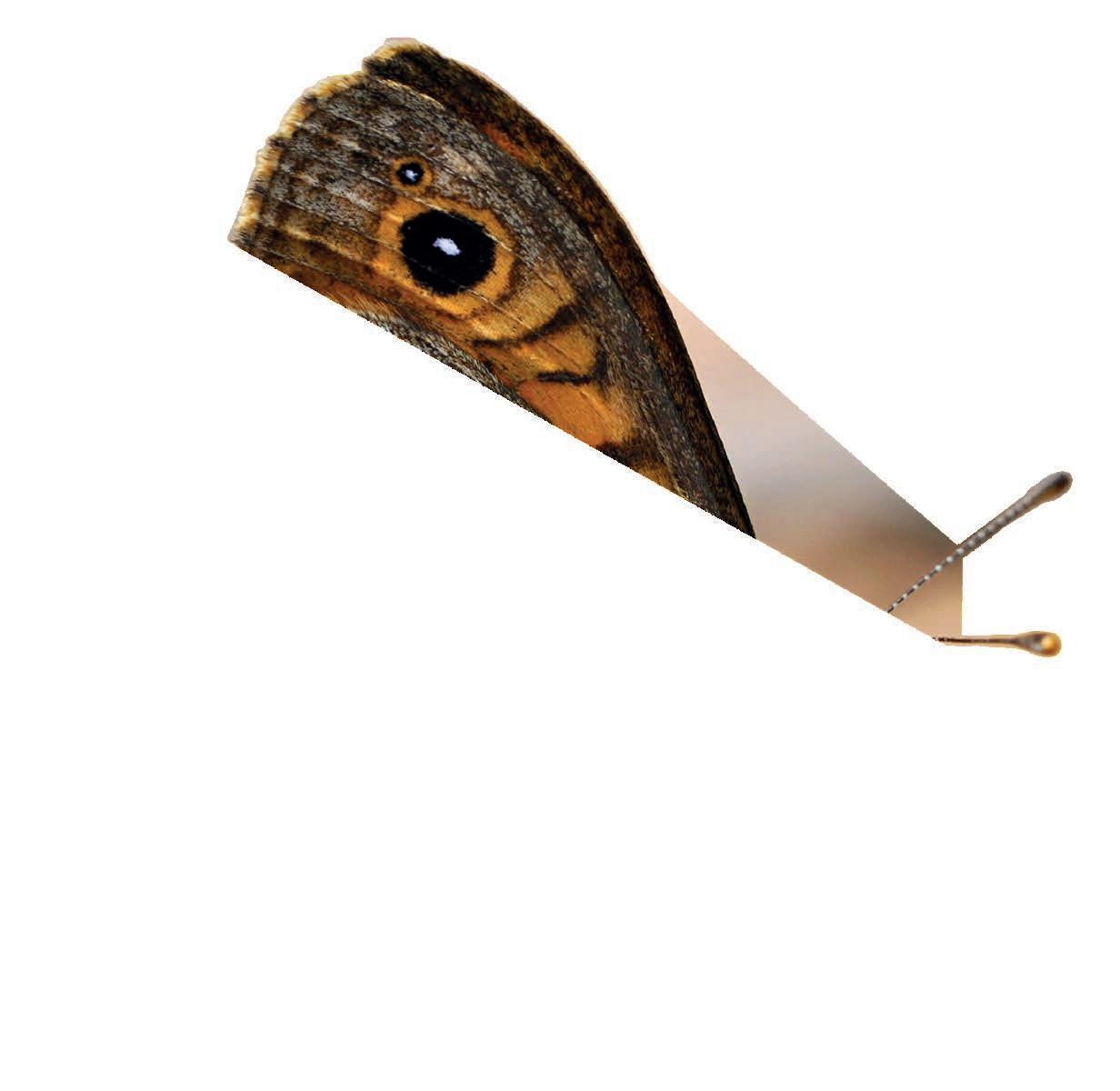
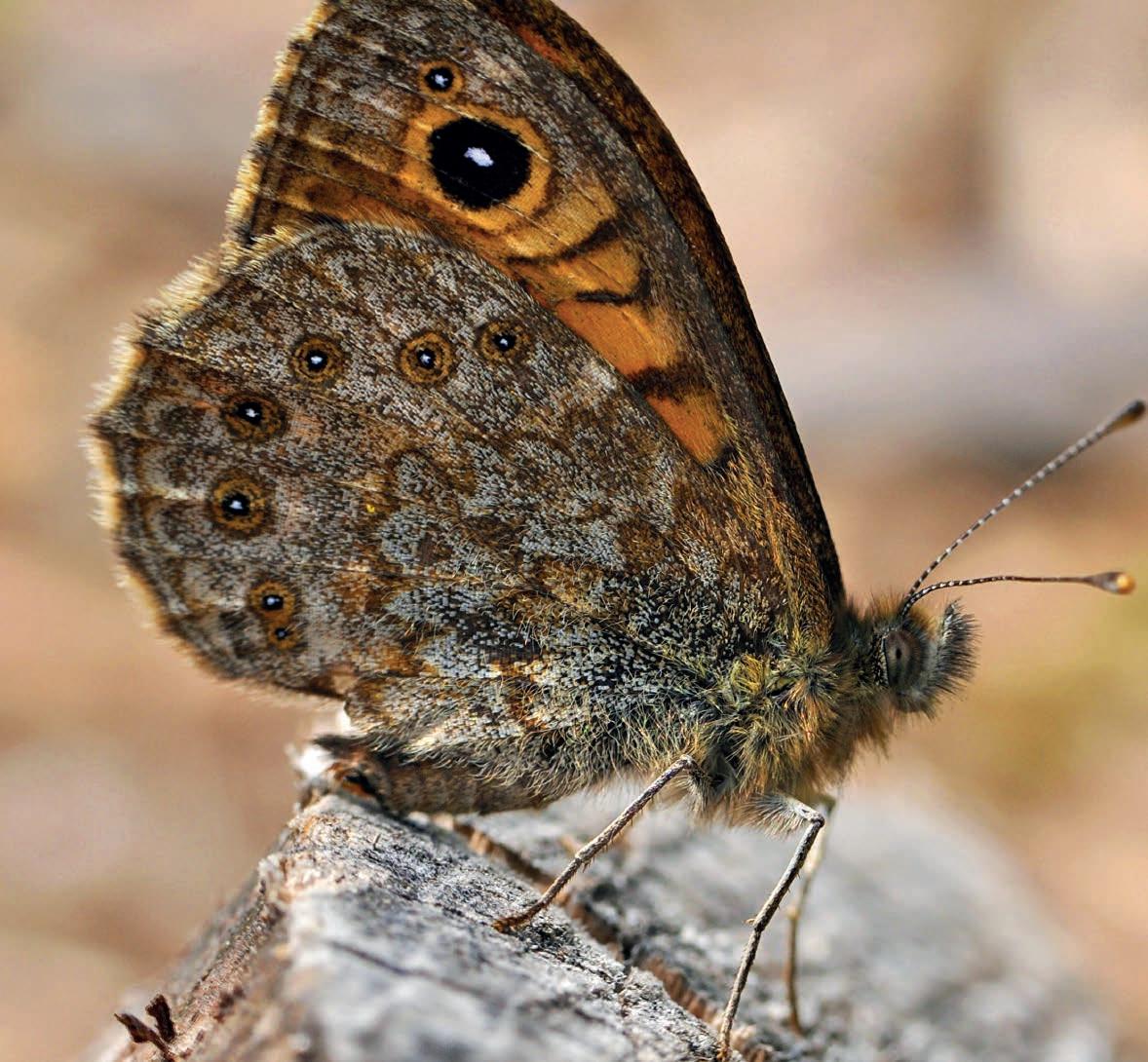
ERNIE JANES ALAMY / STEVE AYLWARD

Chinese water deer are at home in this wetland wonderland.
once up they found it impossible to go anywhere. Forward was not an option, and if they turned their tails to the wind they’d be in Amsterdam for elevenses.
They compromised by side-slipping cautiously, all together in a sweetly choreographed movement, not wishing to lose sight of the gorgeous wet land that was stretched out beneath them, but not over-eager to return to whatever momentary danger had alerted them.
After a few minutes of this buffeting betwixt-and-between stuff, one or two courageous souls started to parachute back down onto the welcoming marshes beneath, and the rest followed.
An exceptional place.
Two thousand. That’s a lot of lapwings. A lot of any bird that has been struggling to make ends meet for years in this country; their smaller numbers is a sad fact of life in most places. I associate flocks of 2,000 with my boyhood, when lapwings were considered common. But these days I also associate such flocks with truly exceptional places.
Carlton Marshes. Savour that name: because it’s going to be big. People talk of Minsmere, Cley, Bass Rock, Chanonry Point, Fair Isle, Slimbridge… great places and great names: for wildlifers they resound as the Royal Albert Hall, Carnegie Hall and La Scala do for music-lovers. Carlton is about to join that company.
So let’s flash back to 2016. I was bumping round a few fields in a hardbucking 4x4 looking admiringly at a field of beans. They were rotten beans. It was a bit of farming that must have seemed like a good idea at the time. You needed a very special pair of eyes to see those beans as land full of wonder. But it was from that bean field that those 2,000 lapwings rose less than four years later.
I was sharing the bean-field with Julian Roughton, CEO of Suffolk Wildlife Trust, and Matt Gooch, site manager at
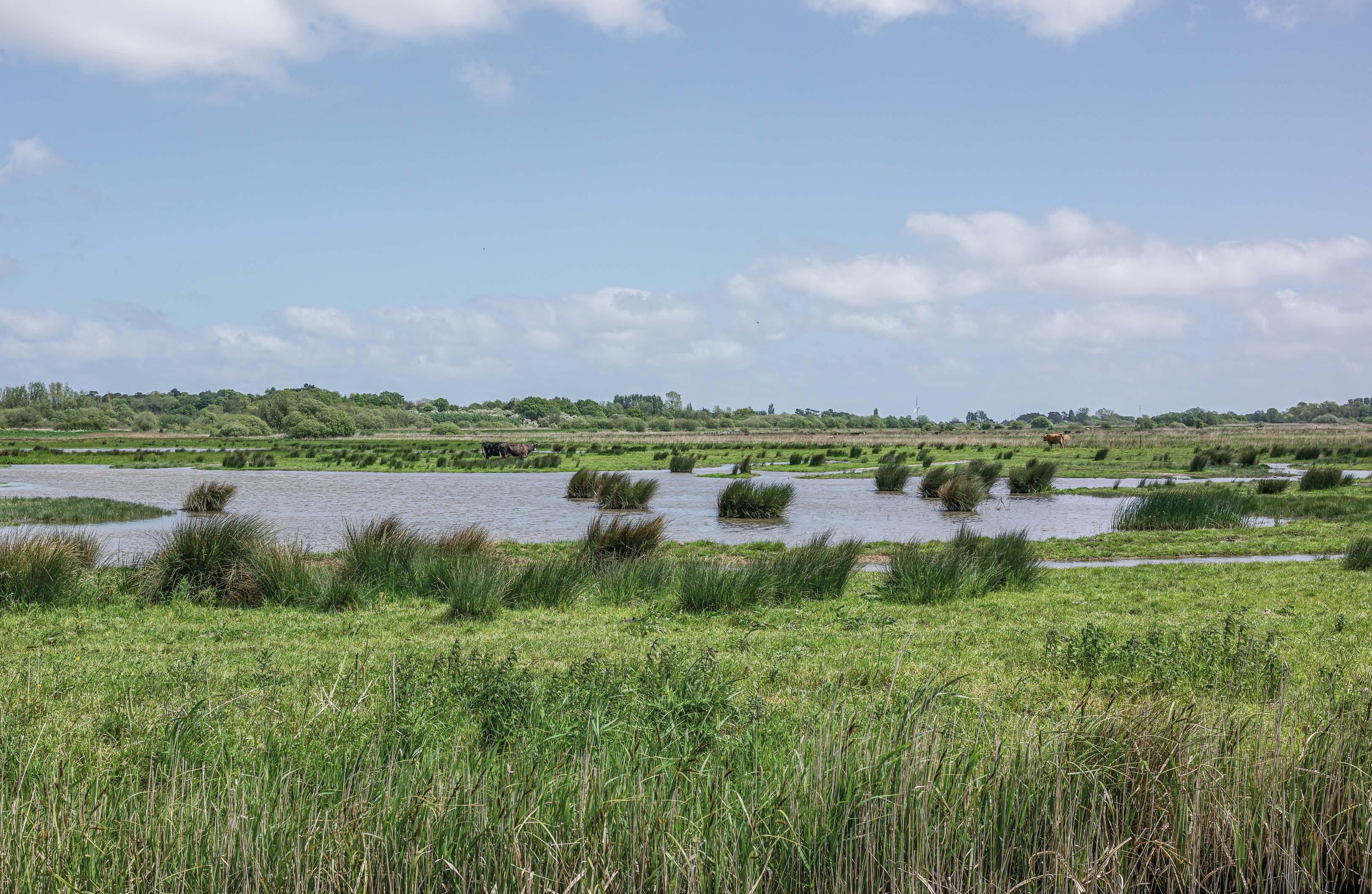
Carlton. It was obvious that they both had special eyes: eyes that could see future wonders in a hill of beans. They were talking to each and pointing, and every so often turning to me and trying to make me see not beans but lapwings. They kept on at me with the P-word.
“The potential of this place…”
“And once we’ve dug these scrapes… opened those sluices… planted those reedbeds… taken out those trees… opened out those dykes…”
Now I was back, and with the same people. I was walking at 45 degrees, and seeing at last what they had seen all those years ago. But this wasn’t potential: this was real. They hadn’t made a new nature reserve. They had made a new landscape. From horizon to horizon this is effectively a new place. They had turned it into Carlton Marshes. Carlton Marshes as it was always meant to be.
Bigger is better
Suffolk Wildlife Trust has been involved round here since the 1970s and owned and managed a section of the marshes: 54 hectares. Over time this grew and then came the once-in-a-lifetime opportunity to buy some more land around it and more or less double the size: up to 314 hectares, 1,000 acres or so.
Now here’s one of those funky facts about wildlife conservation. By doubling the size you don’t double the importance of site. You quadruple it. At least. Bigger means tougher, stronger more resilient, more capable of taking setbacks in stride. The more connections a wild place has with other wild places, the better it is for everything that lives there. Doubling Carlton Marshes has turned a nice place into a superb place.
It’s about water. The management of the place is very complex and the stages by which it has progressed to its current ever-rising level of excellence show a history of meticulousness and attention to detail. But the principle is simplicity itself: just add water.
Water brings in life. The marshes have been drained in recent centuries, for grazing cattle and growing crops. Put water back and they can revert to fen,

Water voles can navigate the wonderful miles of freshwater dykes, listen out for their telltale ‘plop'.
Bittern will be just one of the many species that benefits from the transformation at Carlton Marshes.
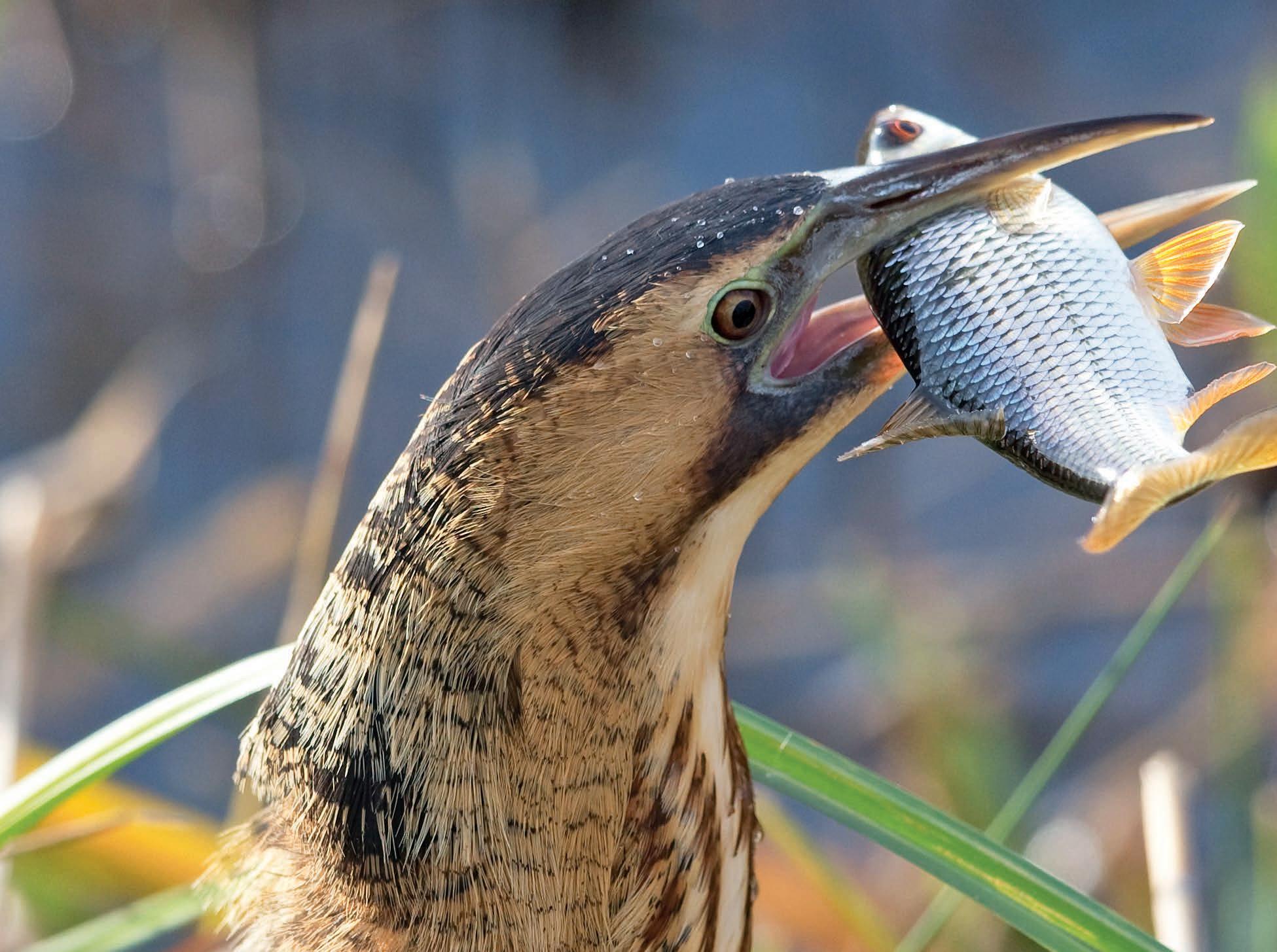
reedbed, open water and wet grazing marsh. On that blustering wintry day there were ducks and geese all over the pools of water, and the place and the birds all looked as if it had been like this for thousands of years. The place is brand new and looks eternal: and that is the nature of the triumph.
For wildlife and people
Now there are two ways of responding to such a place, and they involve a contradiction – but then most of the things we do have contradictions at their heart. Just as we want to travel to great adventures and at the same time, never leave the comfort of home, so we find ourselves in a wild and beautiful place and want to have it for our own forever – and also to share it with the world, especially those who need it most; and Carlton is bang next to Lowestoft.

Carlton Marshes aims to cope with both sides of that contradiction. On any place with such space, solitude is easily found. But the reserve has been developed for humans as well as lapwings. The new visitor centre was being built; the people at work there seemed relieved that it hadn't all blown away in the night. It’s all been made possible by the generosity of supporters of Suffolk Wildlife Trust, who put up £4 million between them, and the National Lottery Heritage Fund, who contributed another £4 million. That figure, on its own, is a triumph for the Trust: getting a grant of such size can only be done by a top-notch organisation with a fullybaked plan of action.
So you will be able to visit the centre, have a cup of tea, a pee, learn about the marshes and generally be comfortable. The place will bring in tourists, casual walk-ups and those who have crossed the country to have a look at Carlton Marshes. There will also be an education programme, so the next generation of people will able to see and understand what wildness is all about. They won’t have to see images of it on a screen: they can be out there in the wind (and perhaps, you never know, the sun) experiencing it for themselves.
They will learn how much this stuff matters. They will, let us hope, take it all on board and look after what’s left of the wild world when their turn comes to be in charge.
Restoration is never complete
Julian and Matt were at it again. The reedbeds were growing beautifully: soon there would be breeding bitterns. Those open wet areas: well, what crane could resist? These lovely birds, five foot tall

The new visitor centre will be the perfect place to start and end your wild Carlton experience.
COWPER GRIFFITH ARCHITECTS
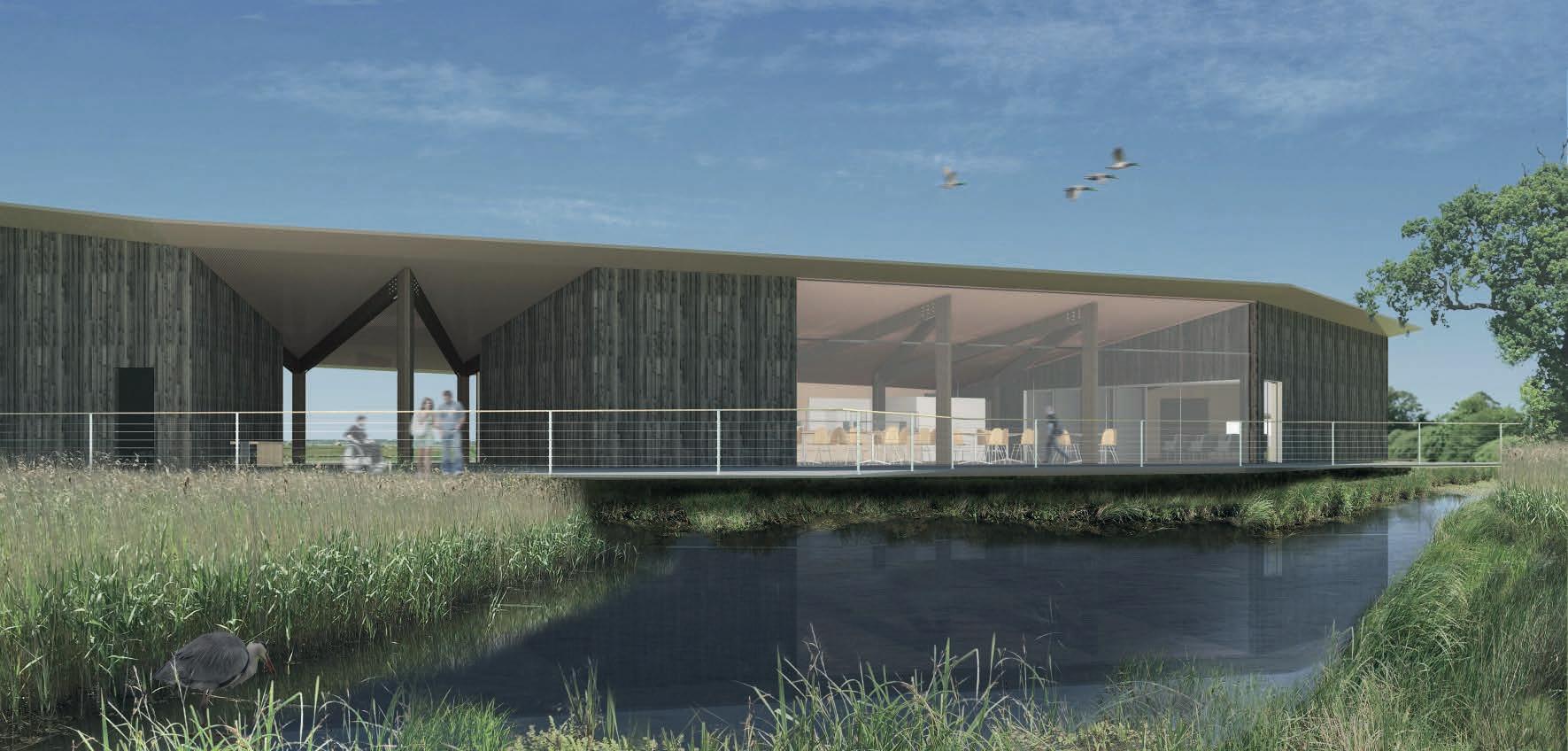
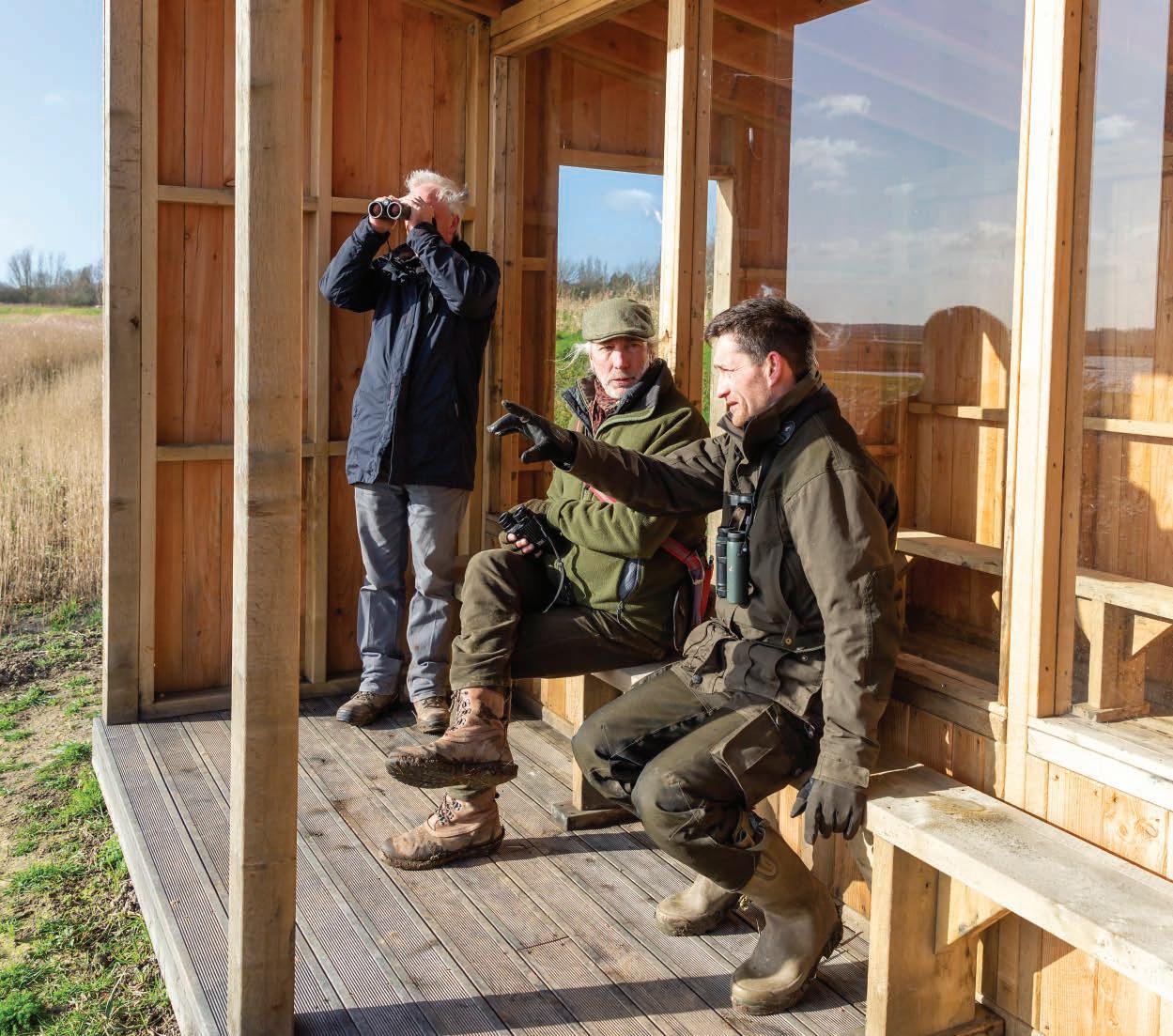
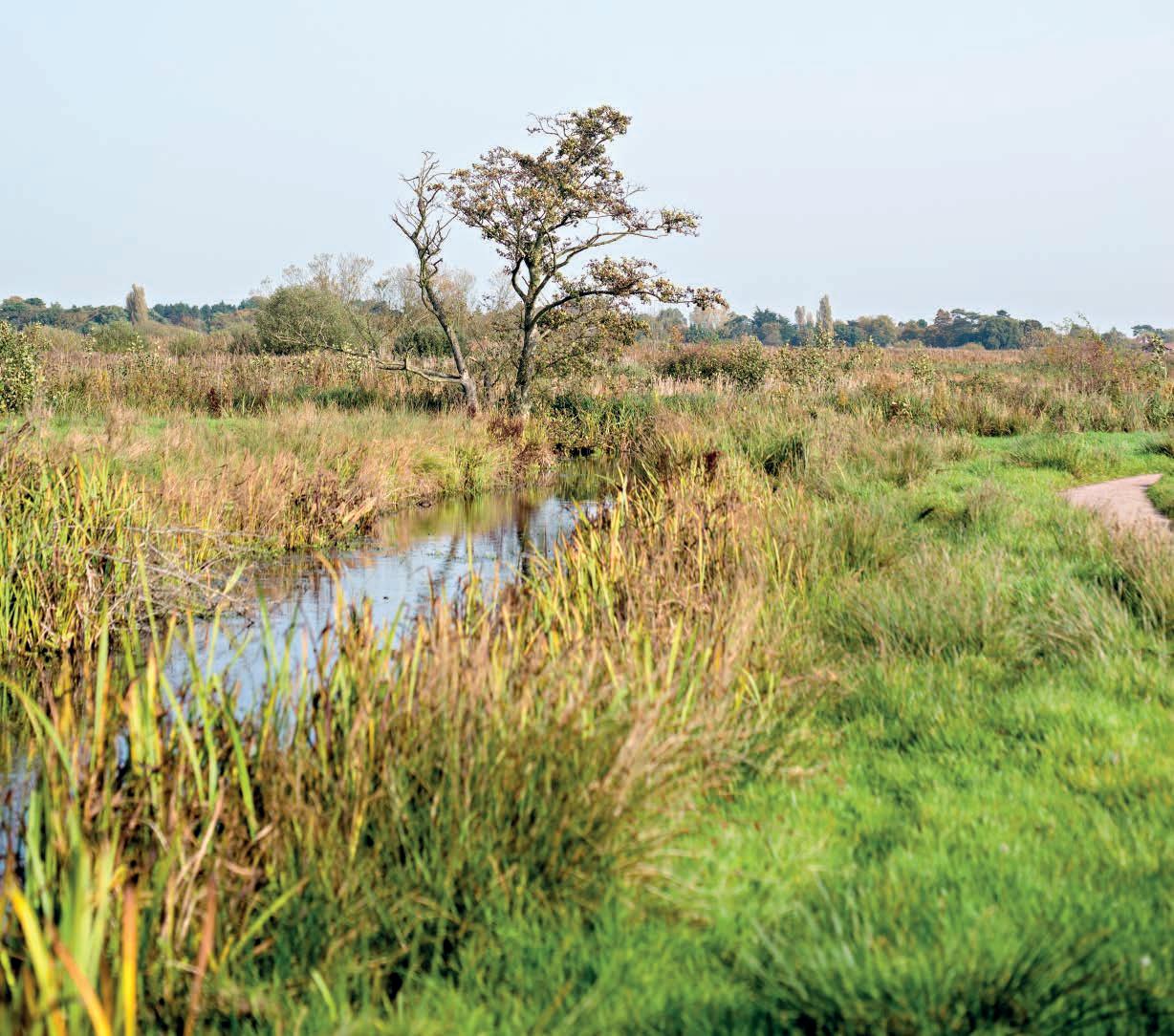
BELOW: Matt, Simon and Julian, survey the landscape from one of the reserve’s new hides.
and prone to outbreaks of dancing, were extinct in this country for about 500 years. They came back to East Anglia in the 1970s and have – very, very slowly -- been spreading out in recent years. Wouldn’t they love Carlton?
So the place isn’t finished yet, but then such places never are. It is a glorious Forth Bridge job: a constant task of looking after the water-levels, the wildness and those that care to live here: 72 species of breeding birds in the last five years, water voles, otters, wall brown butterflies, Norfolk hawker dragonflies. They found 160 species of aquatic insects just in the dykes that criss-cross the reserve.
The figures are great, but you can sort of understand them without being able to identify any one of the 17 species of dragonfly or the 22 species of beetle in the dykes. You can do it with your eyes closed on a May morning: when you hear the din of bird song you know that this place is jumping with life. You can do the same thing on a windy winter’s day by raising your eyes to the squadrons of lapwings: like the visible chunk of iceberg, they are infallible indicators of the unfathomable richness that lies out of sight.
Carlton Marshes is waiting for you. It’s both a completed masterpiece and a work in progress, just as any great nature reserve should be. The best way we can salute the humans who made it all possible is to go there and feast the senses on the wildlife you will find there.
The spring opening of the reserve and centre have been delayed by Covid-19. Look out for updates over the summer. suffolkwildlifetrust.org









